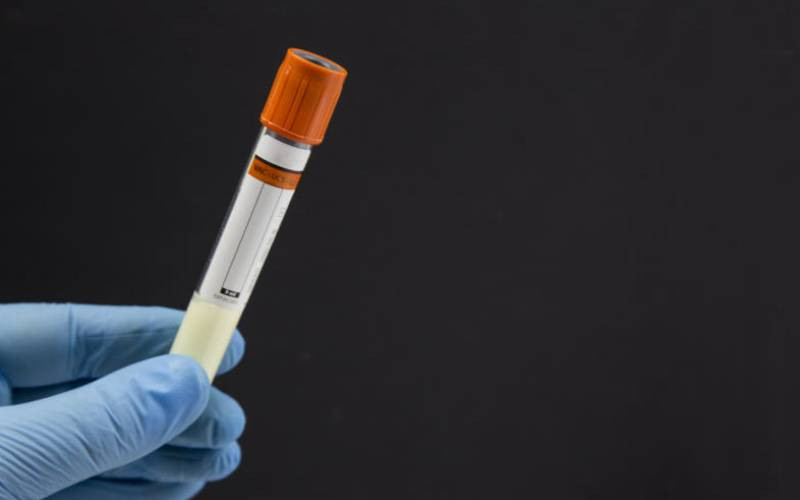
Termed as almost mistake-proof by Planned Parenthood, the intrauterine device (IUD) is a small contraceptive device that is inserted into the uterus to prevent pregnancy. The IUD is made of plastic and shaped into a T.
An IUD is 99% effective. It is called mistake-proof since once it is inserted, you don’t have to keep up with swallowing pills, applying a patch or remember to wear a condom.
Types
There are two types of IUDs: copper and hormonal. Sperm typically don’t like copper so when the T-shaped IUD is wrapped in copper, its presence in the womb prevents sperm from reaching the egg and so no fertilisation takes place.
Hormonal IUDs on the other hand, contain the hormone progestin which prevents pregnancy by thickening mucus in the cervix thus trapping sperm. Progestin can also prevent ovulation thus, sperm have no eggs to fertilise.
How long does it last?
Different IUDs are effective for different amounts of time. Depending on the type of IUD you choose and the brand available, it can typically last for between three and 12 years.
How is it applied?
As the name suggests, the IUD needs to be placed in your uterus. A trained medical practitioner will first take your medical history and test for any STDs. You may be given medicine to make your cervix numb before insertion.
A speculum is used to open the vaginal wall before a special inserter is used to put the IUD into your uterus through the open cervix. You may feel some pain or cramps but this will subside after some time.
In some cases you might feel dizzy or faint but this too shall pass.
There is a piece of string that will dangle into your vagina which serves to help the doctor to remove the IUD. You can feel it too when you insert your fingers into your vagina however, do not pull this string as you can move or pull out your IUD.
What will you notice immediately after it has been placed?
In most cases you will be fine however, you might experience cramping and backaches after the procedure. A bit of rest, heating pads and painkillers can help ease the pain.
In the first three to six months you might experience spotting and cramping but this should ease off with time.
Hormonal IUDs can make your period lighter and they could stop as a whole. Copper IUDs can make your period heavier and cramps more intense.
Remember that if the side effects of the IUD are making you uncomfortable, you should consult your doctor immediately.
Can the IUD move?
In the first three months after insertion, the IUD can move about. It can also come out during your period so be sure to check if it has since this means you don’t have protection. Should it move or come partially or all the way out, see your doctor immediately.
How soon can you have sex?
This depends on the type of IUD you have. A copper IUD provides immediate protection so you can have sex immediately after insertion.
A hormonal IUD can either provide immediate or delayed protection depending on at which point of your cycle it was inserted. If a hormonal IUD is placed in the first seven days of your period, you get immediate protection. Otherwise, you have to wait seven days after insertion for it to take effect.

Risks involved
Almost anybody can get an IUD. However if you have an STD, untreated cervical cancer, cancer of the uterus, a pelvic infection or you suspect that you are pregnant, then you can’t get an IUD.
Patients who have bleeding disorders, copper allergies or have had breast cancer should also seek other contraceptive options.
Though very rare, the shape of your uterus can prevent you from getting an IUD.
Should you get pregnant when you have an IUD, you should get it removed immediately. Some women get infections after the IUD has been placed. Ensure you get treatment as soon as possible as an infection can prevent your chances of getting pregnant in the future.
What side effects should you be concerned about?
Vaginal discharge that is different than usual
Fever, trouble breathing, chills
Bleeding after sex
Vaginal bleeding that is heavier than usual
Soreness of the lower belly, pain or bad cramps
The string feels longer or shorter than usual
You can feel the IUD coming out of your cervix
You think you are pregnant
If you notice any of the above, consult your doctor.
Can you use it while breastfeeding?
Yes, you can safely use the IUD when you are breastfeeding.
Does it protect against STDs?
IUDs don’t protect against sexually transmitted diseases (STDs). For added protection use condoms every time you have sex.
How is it removed?
It’s pretty simple to remove an IUD. The medical practitioner simply pulls the string mentioned above and it comes out. You should however not attempt to remove it by yourself.
In case of any complications, special instruments may be used.
You might feel a bit of cramping and light spotting but this should pass once the IUD has been removed. Your period should go back to normal once it is removed.
How soon after removal can I get pregnant?
Once the IUD has been removed you can get pregnant immediately.
Would you rather have more money or more free time? The Standard Group Plc is a multi-media organization with investments in media
platforms spanning newspaper print
operations, television, radio broadcasting, digital and online services. The
Standard Group is recognized as a
leading multi-media house in Kenya with a key influence in matters of national
and international interest.
The Standard Group Plc is a multi-media organization with investments in media
platforms spanning newspaper print
operations, television, radio broadcasting, digital and online services. The
Standard Group is recognized as a
leading multi-media house in Kenya with a key influence in matters of national
and international interest.










